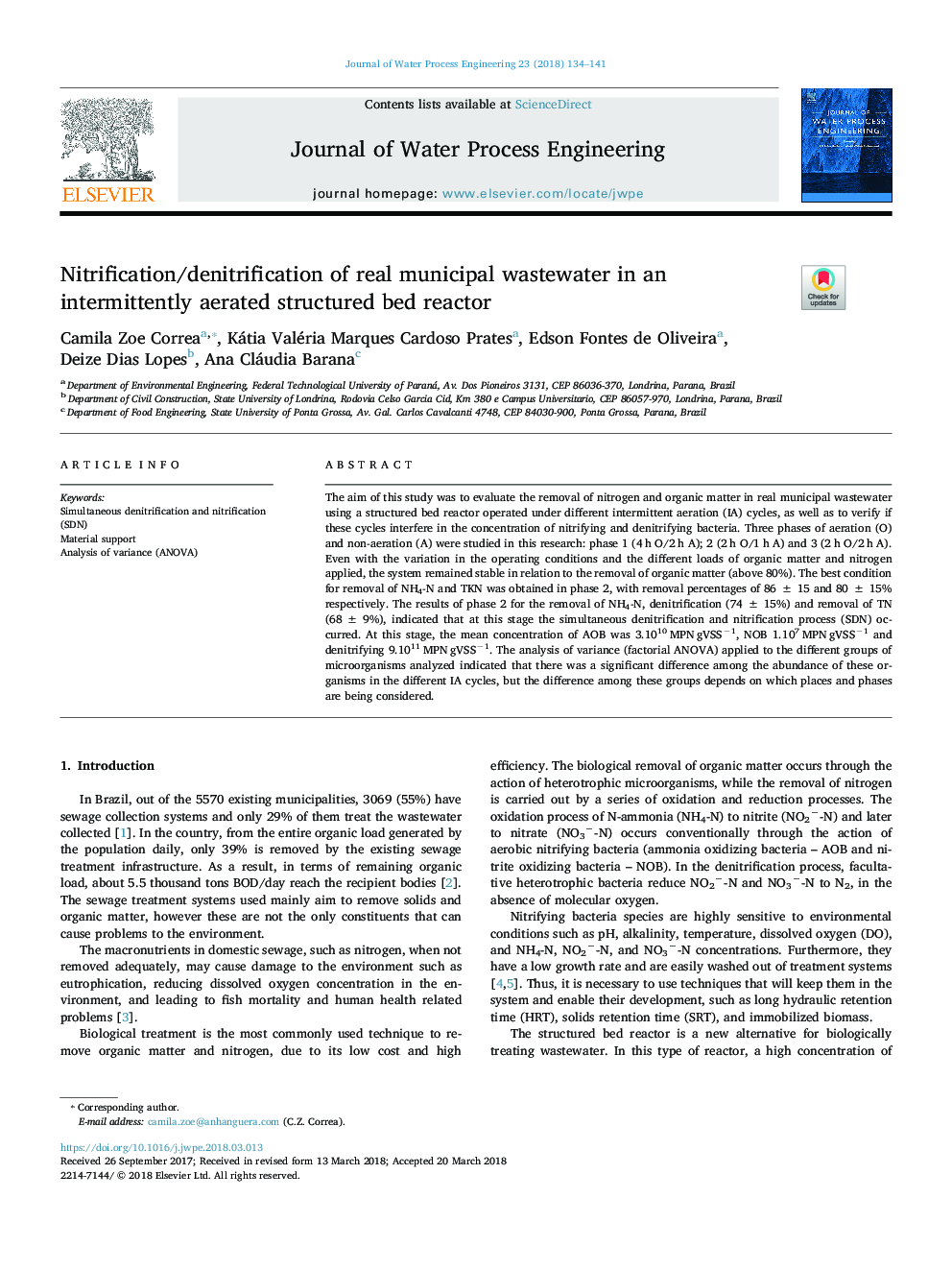| Article ID | Journal | Published Year | Pages | File Type |
|---|---|---|---|---|
| 6671894 | Journal of Water Process Engineering | 2018 | 8 Pages |
Abstract
The aim of this study was to evaluate the removal of nitrogen and organic matter in real municipal wastewater using a structured bed reactor operated under different intermittent aeration (IA) cycles, as well as to verify if these cycles interfere in the concentration of nitrifying and denitrifying bacteria. Three phases of aeration (O) and non-aeration (A) were studied in this research: phase 1 (4â¯h O/2â¯h A); 2 (2â¯h O/1â¯h A) and 3 (2â¯h O/2â¯h A). Even with the variation in the operating conditions and the different loads of organic matter and nitrogen applied, the system remained stable in relation to the removal of organic matter (above 80%). The best condition for removal of NH4-N and TKN was obtained in phase 2, with removal percentages of 86â¯Â±â¯15 and 80â¯Â±â¯15% respectively. The results of phase 2 for the removal of NH4-N, denitrification (74â¯Â±â¯15%) and removal of TN (68â¯Â±â¯9%), indicated that at this stage the simultaneous denitrification and nitrification process (SDN) occurred. At this stage, the mean concentration of AOB was 3.1010â¯MPNâ¯gVSSâ1, NOB 1.107â¯MPNâ¯gVSSâ1 and denitrifying 9.1011â¯MPNâ¯gVSSâ1. The analysis of variance (factorial ANOVA) applied to the different groups of microorganisms analyzed indicated that there was a significant difference among the abundance of these organisms in the different IA cycles, but the difference among these groups depends on which places and phases are being considered.
Keywords
Related Topics
Physical Sciences and Engineering
Chemical Engineering
Chemical Engineering (General)
Authors
Camila Zoe Correa, Kátia Valéria Marques Cardoso Prates, Edson Fontes de Oliveira, Deize Dias Lopes, Ana Cláudia Barana,
